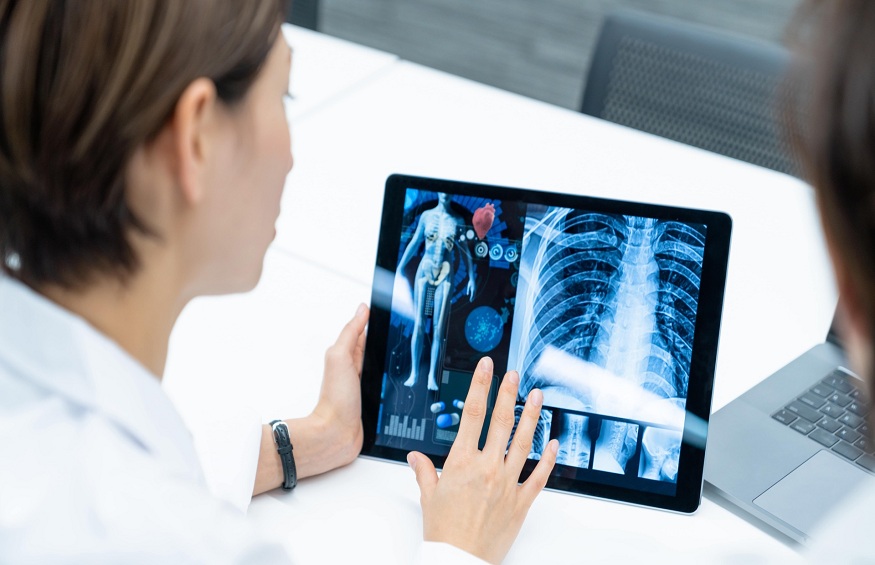Diagnostic imaging by radiology has transformed medicine and opened new horizons in understanding the functioning of the body. This article will discuss the numerous benefits of the best radiology diagnostic imaging and why it is believed to be one of the most effective medical instruments in the United States.
Diagnosis by radiology involves a variety of methods used to view and diagnose various health problems. There are some such techniques that involve X-rays, CT scanning, MRI, ultrasound, and nuclear medicine. All these methods play their respective roles in providing the overall understanding and evaluation of different illnesses.
Best Radiology Diagnostic Imaging Practices
- X-rays: Radiology is a fundamental tool with x-rays. They are able to clearly bring out the skeletal pictures so as to locate fractures, tumors, infections, and the impurity of foreign objects within the body. X-rays are non-invasive and fast, making them ideal for emergencies.
- Computed Tomography (CT) Scans: CT scanning consists of taking multiple X-ray pictures that develop cross-sectional views of the body. It is very effective in diagnosing internal injuries, detecting tumors, and assessing blood vessels. The information gathered from CT scans is very fundamental for surgery.
- Magnetic Resonance Imaging (MRI): MRI is a technique that creates detailed images of soft tissues like the brain, muscles, and organs using magnet fields and radio waves. This is particularly important when it comes to finding diseases such as multiple sclerosis, stroke, and joint injury. In contrast, MRI does not expose patients to ionizing radiation, unlike X-rays and CT scans, which can be risky when taken repeatedly.
- Ultrasound: Ultrasound imaging produces pictures of internal organs and tissues using high-frequency sound waves. It is most often prescribed during pregnancy to observe fetal development. It also plays a critical role in identifying abnormalities involving the heart, liver, and kidney.
- Nuclear Medicine: The use of small concentrations of radioactive materials in diagnostic and therapeutic processes is known as nuclear medicine. Such imaging can provide information regarding the anatomy and physiology of various organs, which is essential for the early diagnosis of cancer, thyroid diseases, and bone disorders.
Benefits of Radiology and Diagnostic Imaging
Early Detection:
Radiology diagnostic imaging, for instance, is renowned for its capacity to uncover medical problems in their initial stages. Early detection in many cases results in successful treatments and a better patient’s prognosis. Early detection of diseases such as cancer, heart disease, or neurological disorders is crucial for taking timely action that may prevent their deterioration, thus saving lives and relieving patients and healthcare systems from the burden associated with chronic conditions.
Accurate Diagnosis:
No other diagnostic approach provides the level of detail in radiology images. This precision allows healthcare personnel to accurately diagnose a patient’s condition and offer specific treatment. For example, oncology radiology imaging can differentiate between benign and malignant tumors so that patients are given the correct treatment. This medical imaging technique allows doctors to pinpoint the specific site and extent of bone fractures or joint abnormalities and thus guide surgeons on effective ways of effecting repair.
Non-Invasive:
Many radiology imaging methods are non-invasive, which implies that no surgical procedures or the insertion of any foreign instruments are used in carrying out these methods. It is less painful for a patient and prevents potential complications. It reduces the recovery period and enables a patient to go back to their normal duties more rapidly. Patients do not need surgical incisions while undergoing techniques like MRI or ultrasound. When assessing diseases involving fragile organs, non-invasive methods are especially crucial.
Safety:
Trained professionals can usually make radiology and diagnostic imaging safe. In a few techniques, such as X-rays, there is a little radiation. However, when a patient is in critical condition, the benefits are great compared to the slight risks. Diagnostic imaging radiation exposure is meticulously regulated, so it falls within harmless limits. Patients do not experience health risks because of rigorous safety measures and protocols that provide them with appropriate medical information.
Versatility:
Radiology diagnostic imaging can be used in medical specialties such as cardiology, oncology, neurology, and orthopedics, among others. Due to its versatility, it is necessary for health care providers. Imaging is employed by cardiologists to evaluate heart function as well as blood flow, while neurologists employ it to assess brain disorders. Such a cross-specialty utility enables proper multidimensional patient care because radiology plays an important role in diagnosing and managing multitudinous diseases.
Treatment Guidance:
Besides diagnosis, radiology imaging is of vital importance in guiding treatments such as surgery, radiation therapy, and interventional procedures. real-time feedback so that the interventions are exact and efficacious. Intraoperative imaging is used by surgeons to guide complex procedures and radiation oncologists to accurately direct radiation to cancerous tissues. Interventional radiologists’ image-guided catheters and stents into place, thereby minimizing invasiveness and speeding up the recovery of the patient.
Patient-Friendly:
Patients usually tolerate radiological diagnostic imaging procedures well. They are fast, easy, involve little effort, and are therefore suitable for young and old people. For instance, this mode of imaging is non-intrusive, and it allows patients to go through the test with minimal pain or problems. Following this trend, the patient-friendly approach attracts a larger pool of people to undergo early medical evaluations, leading to improved health outcomes.
Cost-Effective:
Detecting ailments at an early stage may eventually reduce costs. Such interventions usually minimize the need for expensive treatments. Radiology diagnostic imaging has positive effects on patient health, even when health problems are prevented from becoming worse. It helps reduce the financial burden that the healthcare system experiences. Effectiveness in preventing advanced disease stages and complications saves costs in healthcare delivery, which is advantageous to all patients and society.
Conclusion
The Best radiology services in usa has greatly revolutionized today’s medicine, giving a clear picture of the internal workings of the human body. The advantages of radiology imaging cannot be quantified, from early detection to treatment guidance. With this increasing technological advancement, radiology diagnostic imaging will no doubt continue taking part in healthcare in a more important manner, resulting in improved patient results and quality of life.

